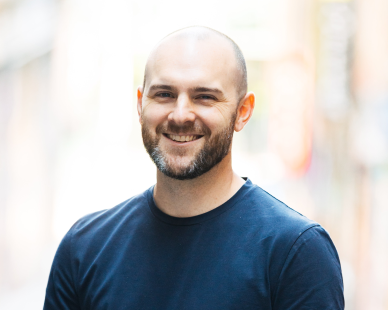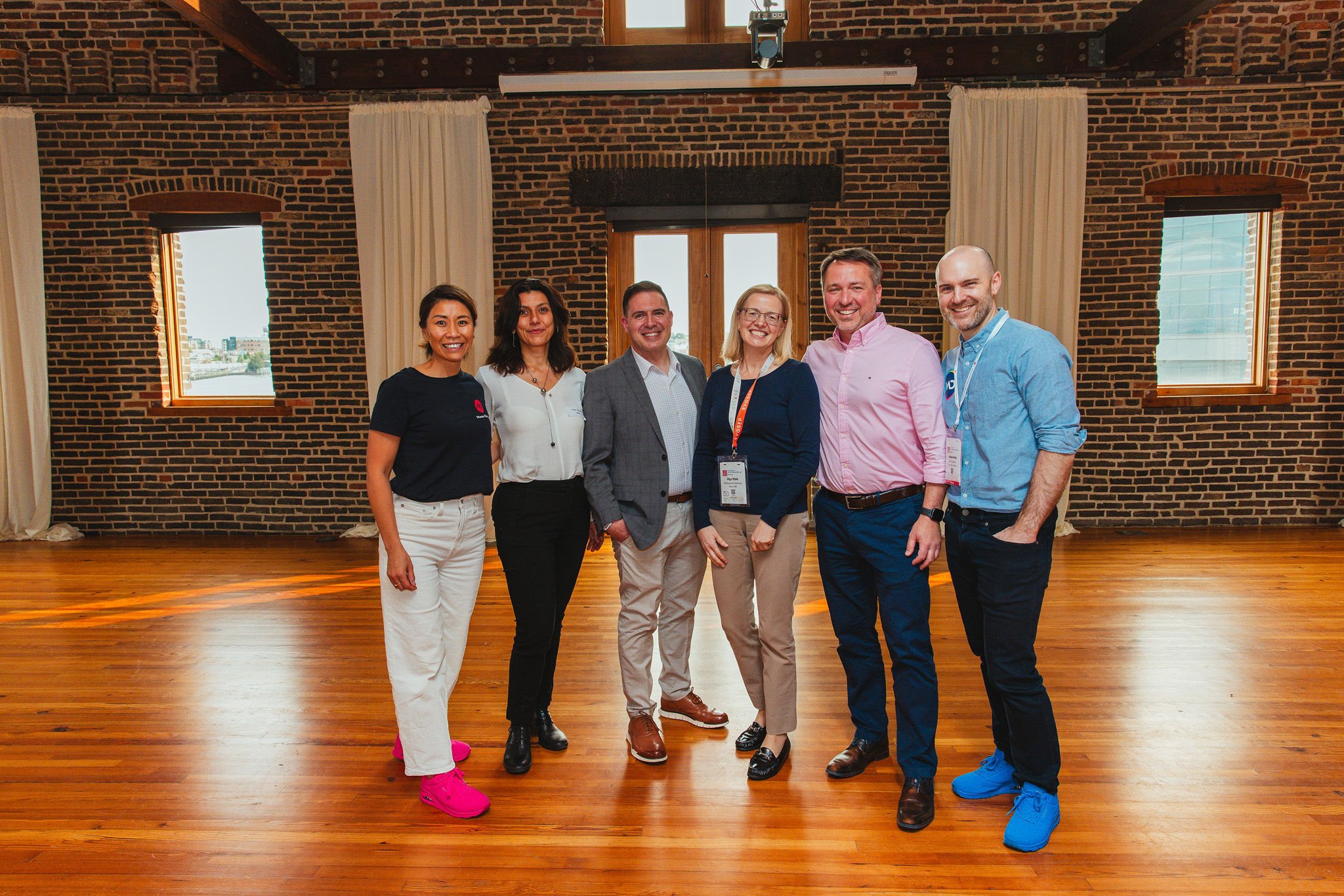
Core fishbowl panelists and facilitators (left to right): Paula Burton, Chiara Guerrera, Harris Bell-Temin, Olga Vitek, Joey Latham, Andrew Webb
Opening Scene – Stepping into the Light
I’m standing at the edge of a circle of seated scientists on Day 0 of ASMS Baltimore, and the energy in the room is undeniable. My co-facilitator, Paula Burton, starts things off with a quick-fire game—"DIA or DDA? Coffee first or data first?"—prompting laughs and relaxing shoulders around the circle. Now it’s my turn. I lean into the microphone, shifting gears from playful to purposeful as I pose the event’s first substantive question. Immediately, the atmosphere changes. People lean forward, eyes focused and engaged. Even latecomers quietly gather along the back wall, sensing something worthwhile is unfolding.
In this fishbowl setup, audience members can freely step into two ‘free’ seats in the discussion. A young executive casually introduces herself as a “recovering mass spectrometrist,” drawing knowing smiles and nods from the group. The conversation quickly becomes lively, candid, and authentic - experienced professors exchanging insights with biotech leaders and early-career researchers alike.
Watching it all unfold, I find myself smiling. This is exactly why we came to ASMS: to surface the pressing questions we usually chat over coffee or in the hallway, and to remind ourselves that progress in proteomics is ultimately a human endeavor. Instruments evolve, algorithms improve, but it’s the candid exchange of perspectives and ideas - the friction and fusion - that lights the way forward.

The fishbowl panel setup
Scaling Up vs. Quality – Reproducibility on Trial
Why it matters: Modern omics must deliver at scale without sacrificing rigor. As proteomics projects balloon from boutique studies to high-throughput pipelines, ensuring reliable results is the new mandate.
This challenge is not new. As Susan Weintraub (Sue) reminded us during the discussion:
"I got my first mass spectrometer in 1971—we were using slide rules. My biggest challenge today is that, after all these years of boutique, high-level projects, it’s no longer financially feasible. It’s become a real difficulty to balance high-quality care with the realistic throughput we must have."
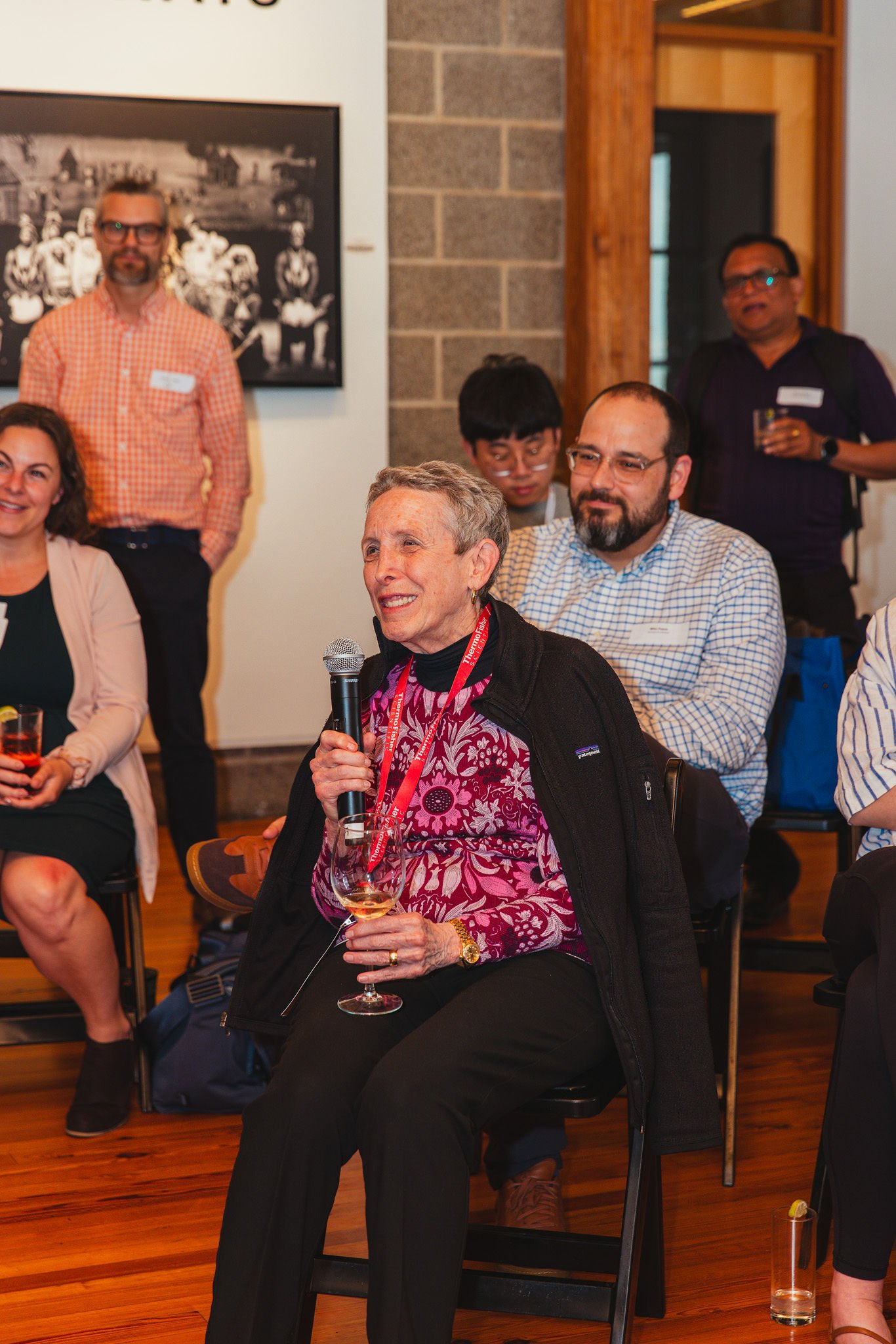
Sue Weintraub, a volunteer fishbowl speaker, dove into the dynamic conversation
Sue's words resonated deeply. Many of us built careers on carefully tailored experiments and meticulous manual tuning of methods. Yet, as the field accelerates into clinical, pharma, and large-scale biological contexts, we must embrace standardized, automated, and reproducible workflows. Chiara Guerrera reinforced this clearly:
"The more biological, single-shot replicates you run, the more the technical noise averages out—and the real signal finally pops through."
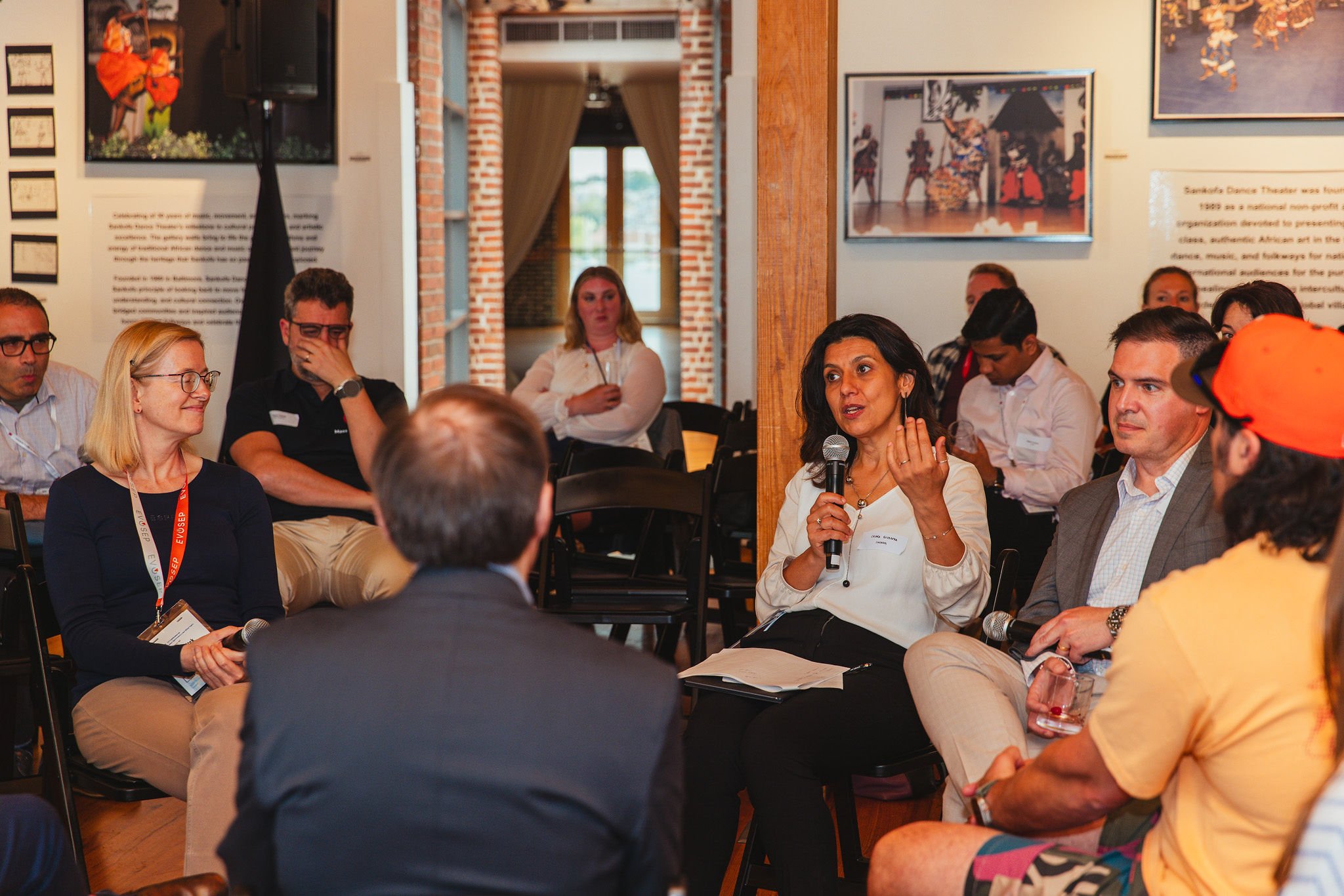
Core fishbowl panelist: Chiara Guerrera
I believe our field is being pushed to industrialize without losing its scientific rigor or intellectual curiosity. Reproducibility and scale have become twin imperatives. We need workflows delivering solid, repeatable results—whether running 10 samples or 10,000.
The takeaway? The real risk isn’t losing market share; it's losing insight. Unless we pair rigorous quality with high-throughput workflows, we risk forfeiting proteomics’ unique power to illuminate biology, spark innovation, and seed the next generation of products.
Bridging Worlds - Communication as a Super-power
Why it matters: The best science can stall if we fail to communicate. In today’s multidisciplinary teams, translating proteomic data into someone else’s language is a super-power that propels projects forward.
Lindsay Pino captured it perfectly when describing hand-offs to collaborators in other fields.
“They don’t really care how many peptides and proteins are in our bar chart… they’re like, ‘I don’t care. Do you see the one protein that I want to see?’”
laughed Lindsay Pino, recounting the blunt expectations of her biology colleagues. The room responded with a wave of knowing laughter—every proteomicist has watched a non-specialist’s eyes glaze over at our beautifully complex plots. Olga Vitek, then shared that early in her career she had to overcome the challenge of lab members speaking a “different language” of science. The solution every time was plain old communication – spelling out goals, definitions, and ownership of data up front. I couldn’t agree more. As proteomics marches into pharma, clinics, and beyond, our ability to tell the story of the data is as important as the data itself. The scientists who can do that – who act as bilingual bridges between mass spec geeks and the rest of the world are the ones who will have the most impact, turning complex experiments into real-world impact.
.jpg)
Lindsay Pino, a volunteer fishbowl speaker, dove into the dynamic conversation
Know When to Say No – Learning from Null Results
Why it matters: Not every experiment succeeds, and that’s okay. Knowing when to stop, scrap, and start over isn’t admitting defeat - it’s cutting a path toward real discovery.
During the discussion, a sober truth emerged: sometimes the hardest act of leadership in science is pulling the plug. As one panelist urged,
“At some point, you have to stop fiddling with the data to make them say what you want... accept that it has to be trashed, learn something, and move on to do it again.”.
There were nods and a few winces around the circle a we all have pet projects we’ve tried to resuscitate one too many times. I chimed in with my own perspective: in an age of unlimited data, it’s tempting to assume something meaningful must be hidden in every dataset. But ‘chasing ghosts’ is how you lose months on a wild goose chase.
The true mark of maturity (for a scientist or a field) is the discipline to interpret the evidence at face value and take the learnings. By saying “no” to shaky results, we make space to pursue the next, better-designed question. In proteomics, sometimes progress means a hard reset.
Breaking Silos – The Multi-Omics Challenge
Why it matters: The biggest breakthroughs now lie at the intersections – genomics, proteomics, metabolomics, etc. But integrating those data streams is no simple feat; it requires technical innovation and cultural change.
“How do we correlate all the omics together?” I threw out, knowing it was a million-dollar question.
“They couldn’t give a damn about what m/z this glycan is – they want to know how it impacts the actual biology,”
industry panelist Joey Latham shared, highlighting the gap between raw data and meaning. He recounted working with clinicians who were hyper-focussed on outcomes (“Will this biomarker improve patient care?”) rather than the spectral minutiae we mass spectrometrists love. The consensus in the room was that connecting the dots across different omics data is one of our generation’s grand challenges. We debated solutions – from better data standards to all-in-one analysis platforms – but also acknowledged the human factor. Each omics field has its own culture and legacy tools, and bridging those silos means encouraging researchers to speak a common language (there’s that communication theme again).
As the CSO of a proteomics software company, I see this daily: our users want to overlay proteomics results with genomic or metabolomic context to generate a more holistic, unified story. We’re getting there, but it will take open minds and cross-domain collaboration to truly build industrialized systems from all these silos.

Core fishbowl panelist: Joey Latham
Thresholds Under Siege – The Identity Crisis of FDR
Why it matters: The mass spectrometry field lives by metrics like FDR (false discovery rate) to trust our data – but are those thresholds keeping up with today’s data deluge? It’s time to question whether yesterday’s statistics are fit for tomorrow’s science.
Midway through the fishbowl, I posed a provocative question: Are today’s FDR thresholds ready for tomorrow’s proteomic tsunami, or are we cruising for an identity crisis? Heads nodded - everyone recognized the pain behind it. Olga Vitek, a leading statistician in the mass spectrometry field, weighed in on the tug-of-war between false positives and false negatives.
“FDR is a metric, and any metric that can be quantified can be optimized at the expense of other aspects. It is important to consider an experiment more holistically.”
she warned, urging us not to anchor our decisions to a single number.
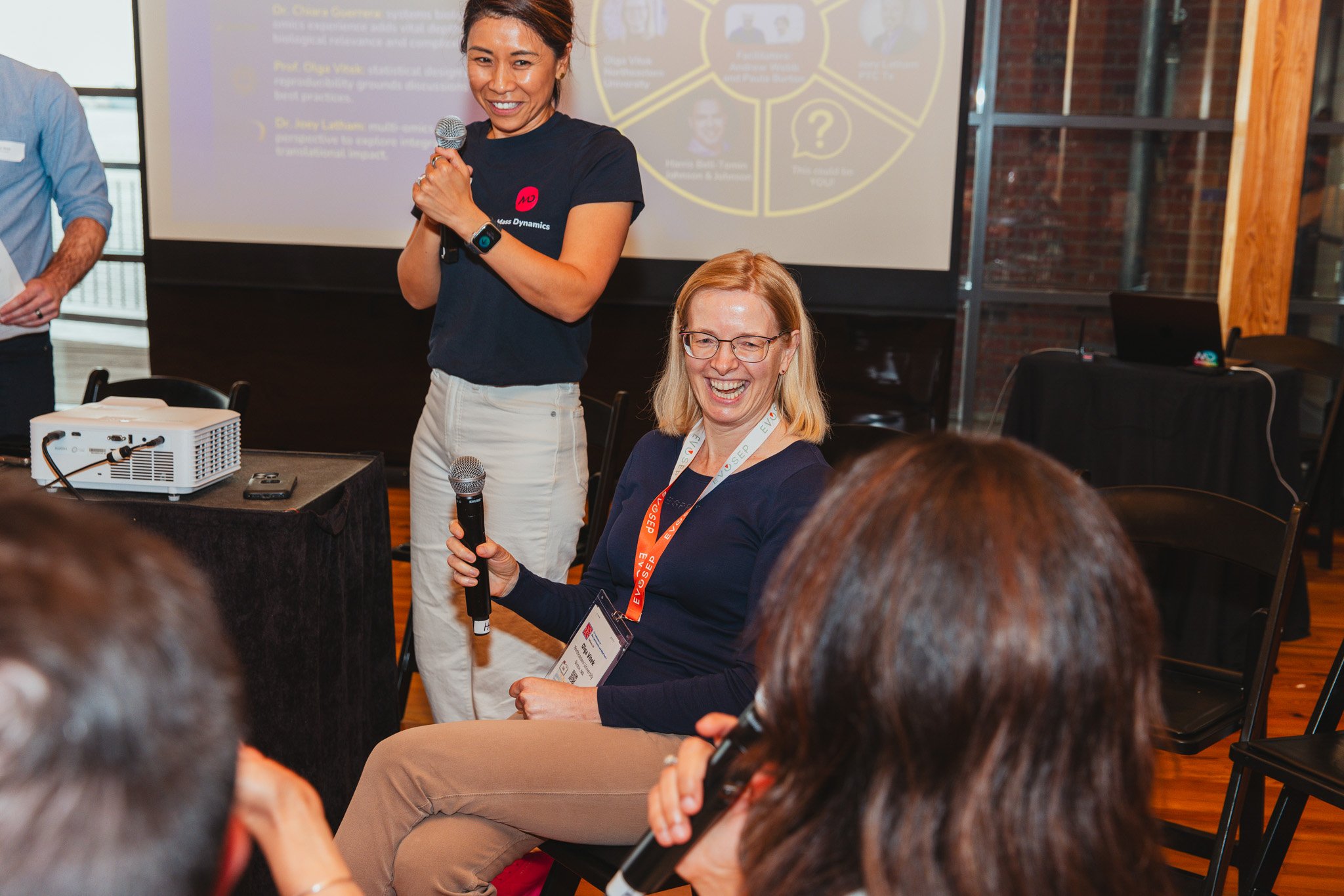
Core fishbowl panelist: Olga Vitek
The debate that ensued was intense and refreshing. A mass spec expert at a mid-sized biotech argued that with more sensitive instruments, we’re actually chasing vanishingly small signals - and our classic 1% FDR may not cut it anymore. Others noted that in resource-rich settings (say, big pharma), you can follow up on dozens of leads, false hits be damned, whereas in academia a wild-goose chase could derail a career. My take-away was that we need a more nuanced approach: statistics are tools, not talismans. We must continuously recalibrate our thresholds and maybe even our mindsets – embracing complementary evidence (orthogonal assays, dose-response behaviors) to decide what’s real. Proteomics is in flux, and even our trusted FDR isn’t sacred if it stands in the way of discovery.
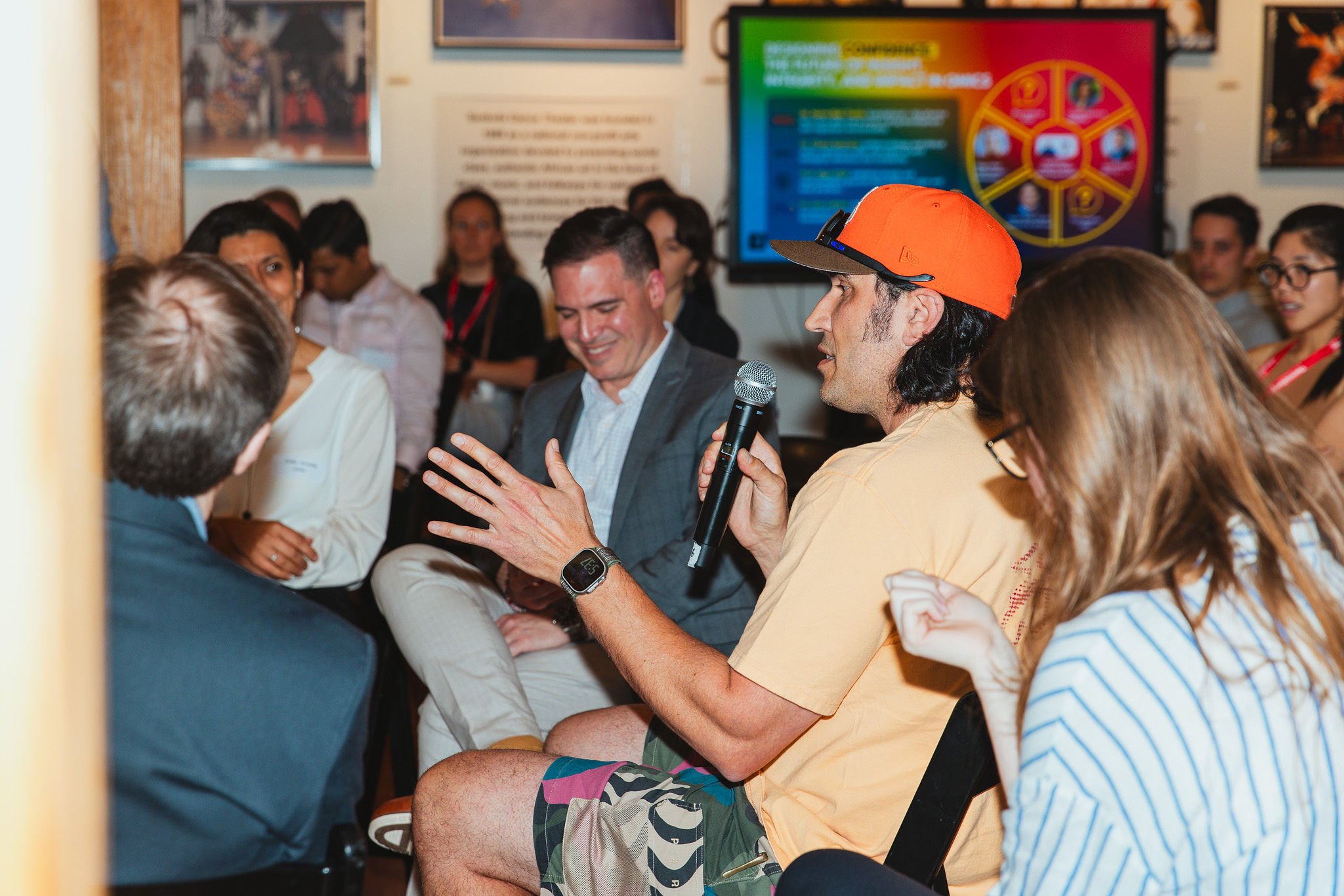
The dynamic and candidate conversation continues during the fishbowl panel
No More Wizard-Only Workflows – The Human Edge
Why it matters: Proteomics still leans on artisan skill - the ‘lab assassins’ who can get impossible experiments to work. To scale and democratize our science, we have to capture that magic in a bottle so any capable scientist can get results, not just the wizards.
One story from the panel really hit this home. A team had a brilliant new workflow delivering spectacular data – but only in the hands of its inventor.
“It will only work in their hands… I assure you, they’re not actually a wizard, just an absolute lab assassin. Things have to work for people without those assassin hands,”
Harris Bell-Temin confessed, shaking his head. We all laughed at the “lab assassin” line, but the struggle is real: how do we make our methods robust enough that they don’t require heroic skill? This theme of the human edge came up again when we debated automation and AI.
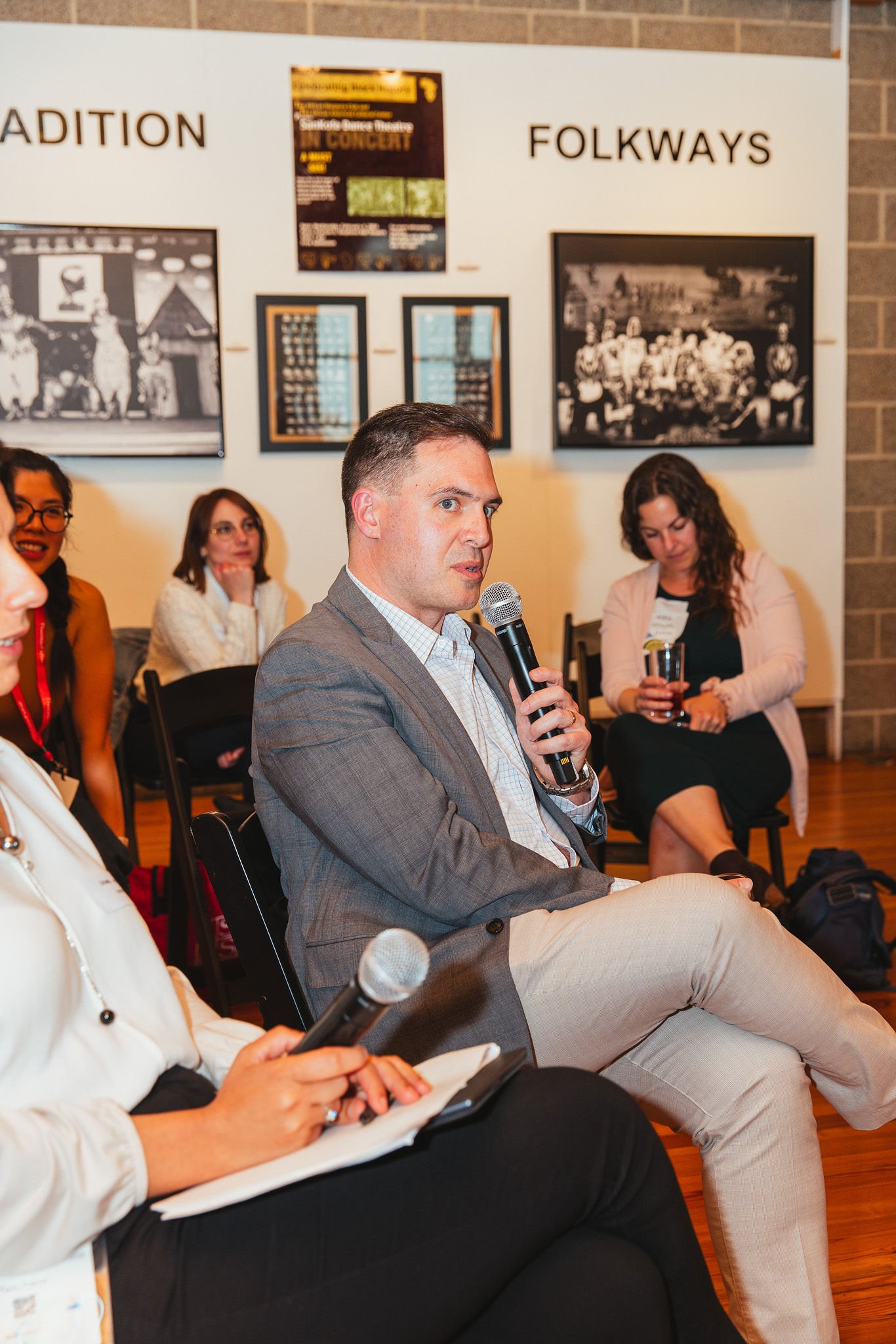
Core fishbowl panelist: Harris Bell-Temin
Do we really need PhD-level intuition at every turn? I believe the future lies in codifying those hard-won insights, then pairing them with smart automation so anyone can run a world-class assay. Imagine a platform where the most innovative scientists embed their best practices once, and every lab can reproduce them at the click of a button. That’s how we democratise access, accelerate discovery, and create a cycle of rapid, reproducible, and reciprocal innovation. If a workflow still succeeds only in the hands of a single genius, our job isn’t finished.
Proteomics Hits the Mainstream – An Expanding Role
Why it matters: Once cloistered in academic labs, proteomics is now powering everything from drug development to forensics. The field’s expansion means new opportunities—and new responsibilities to deliver value outside our comfort zone.“Proteomics has become involved in everything from forensics and food safety to policy and bioterrorism,” noted Lindsay Pino, highlighting how far beyond pharma our science now reaches.
That breadth is exciting; it means proteomics isn’t just for protein enthusiasts anymore. But it also pulls us out of the academic basement. One participant joked that mass-spec experts have been “basement wizards” working in windowless labs; now we’re blinking in the daylight of broader society. Alexey Nesvizhskii spoke directly to the future role of AI in managing our expanding remit:
"I'd be very happy if AI started replacing some of the most straightforward stuff - maybe plasma profiling or TPD, where you have a lot of data and it totally makes sense. But I still hope proteomics remains a very diverse field, with niche applications that aren't going to be replaced anytime soon."
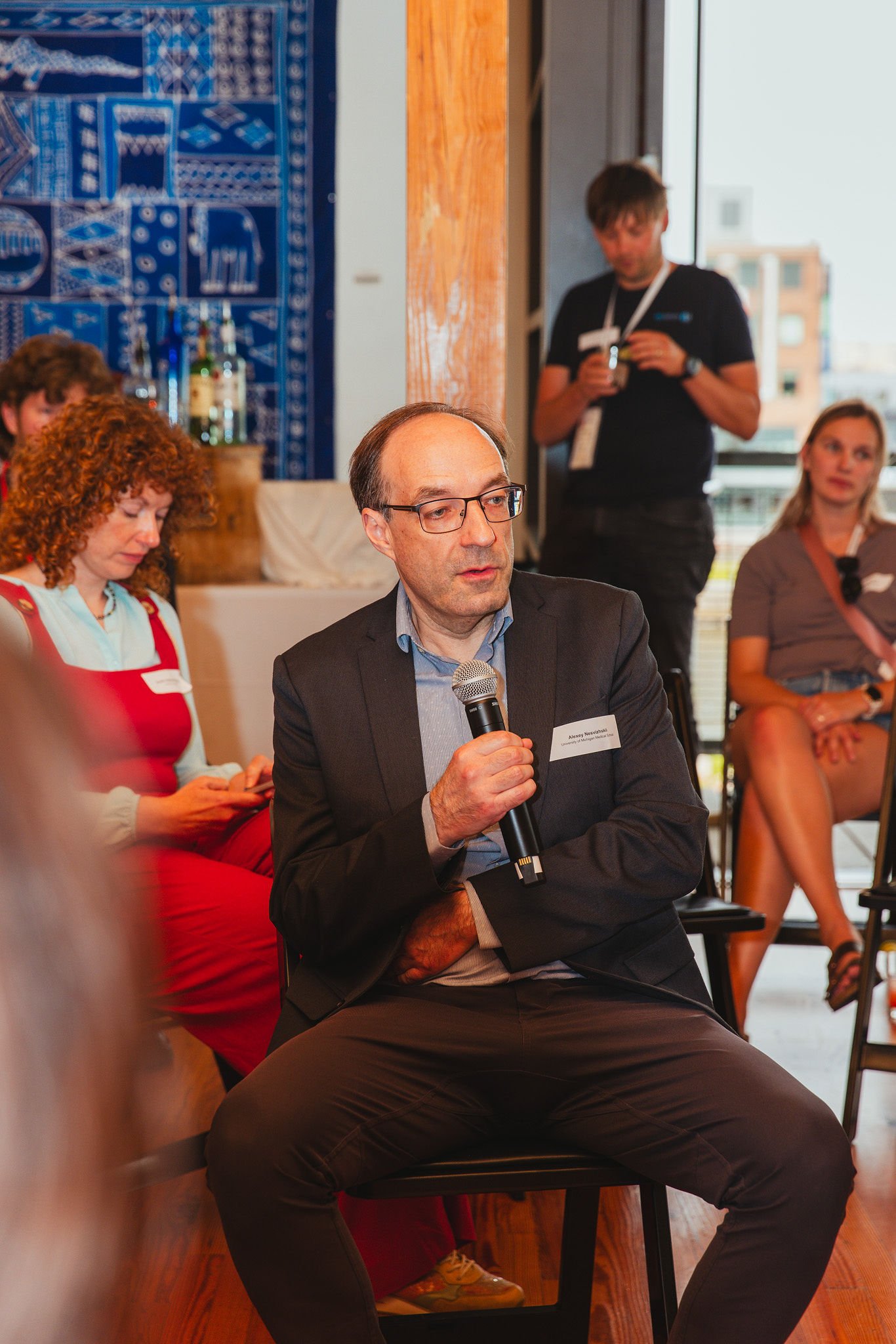
Alexey Nesvizhskii, a volunteer fishbowl speaker, dove into the dynamic conversation
As proteomics steps into the limelight, we must adapt to new audiences. You might find yourself explaining mass-spec data to a crop scientist, a policy advisor, or a security analyst. They won’t speak our language, so we’ll have to learn theirs.
The upside compounds: every time we turn a proteomic insight into a practical win—whether a sharper disease biomarker or a faster counter-measure to emerging threats—we earn trust, attract investment, and invite fresh collaborators. Momentum breeds momentum: the more we codify and share robust workflows, the more biologists, clinicians, and data scientists join the effort, accelerating the feedback loop from bench to bedside.
So What? My Take on the Road Ahead
- Labs - For me, the priority is reproducibility. We should channel resources into training and clear protocols that outlive any single “hero” operator, making results rock-solid and portable. Just as important, we must keep communication flowing; modern science is a team sport.
- Vendors - I believe toolmakers need to obsess over usability and interoperability. The goal is not to flood us with more data, but to let scientists spend their time on biology, not file-wrangling. Platforms that unify multi-omics interpretation will win real loyalty.
- Regulators - Proteomic assays are heading for the clinic and the public-health sphere. In my view, proactive guidelines on data quality, transparency, and validation—think clear standards for FDR reporting and metadata—will build the trust needed for widespread adoption.
---------
This blog post was produced by Assoc. Prof. Andrew Webb using a combination of original notes from discussions and insights. Final compilation was completed with assistance from ChatGPT. Any errors or omissions are unintentional, and the content is provided for informational purposes only. The views, thoughts, and opinions expressed in this text belong solely to the author, and not necessarily to the author's employers, organization, committees or other group or individual
